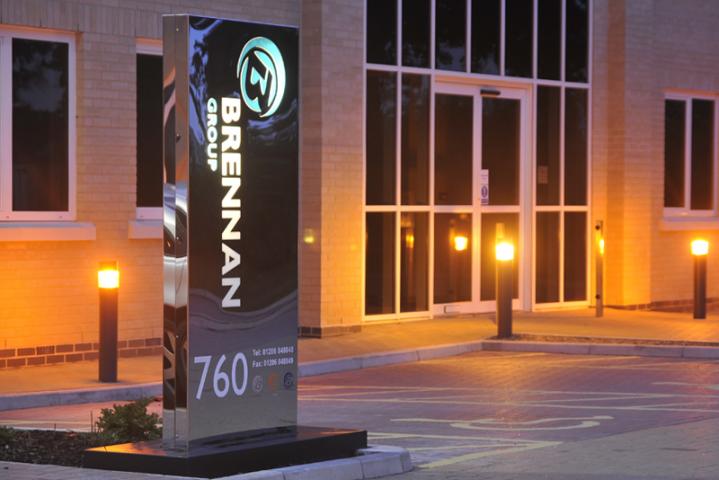Business
Connecting A Solvent Recycler To A Parts Washer
Parts washers and similar industrial cleaning equipment will often utilize solvent and similar chemicals to efficiently clear residue from all types of tools and components. This is process saves labor and time, but there is still the need to deal with the solvent and other waste liquids once they become saturated.
Companies that utilize automated washing equipment will buy solvent recycling equipment to reduce waste that’s leftover. Some parts washers do come with built-in solvent filters that can extend the usability of cleaning liquids, but to really reduce waste and maximize resources, it’s far more effective to pair industrial cleaning equipment with a dedicated solvent recycler. Implementing such a system in a facility is not as costly or involved as many people think. It can also deliver a substantial return on investments and other benefits that easily justify the cost.
The Solvent Recycling Process
Solvent recyclers use solvent distillation to separate contaminants from saturated solvents. The waste solvent is heated so that it evaporates. The particles that were once suspended in the liquid are left behind in a special waste collection chamber while the solvent vapor then moves into a condenser. As the vapor is cooled down, it condenses into liquid, which is now free from contaminants and just as viable for cleaning purposes as virgin solvent.
Some solvent recycling systems are stand-alone units, but others can be directly connected to machinery that uses solvent for an automated cleaning cycle. Connecting these two elements is fairly straightforward, but still requires some careful consideration to ensure the system is safe and efficient.
Designing And Implementing A Looped Cleaning And Recycling System
Connecting a solvent recycler to an industrial washing unit creates a closed-loop system that feeds waste from the washer directly into the recycler. Once it enters the recycler, the distillation process begins and the solvent is cleaned. After it’s fully condensed into liquid form, it drains back into the washing unit where can be used to clean parts, tools, and containers.
Creating this loop does require ample facility space, access to electrical power, water, and drainage. The setup also needs to be designed so that all machinery can be safely accessed by operators.
While solvent recyclers do drastically reduce the amount of waste that much be contained for special handling and disposal—restoring as much as 95 percent of liquid solvent back into the process—leftover waste solids or still-bottoms must be collected. A properly designed and implemented system will account for this requirement and allow for safe and easy waste handling.
Recruiting an experienced professional in this process can be a major time and money-saver. Manufacturers and authorized distributors of solvent recycling equipment will be able to assess a facility, its requirements, and limitations and make recommendations that account for all those specifics. These professionals will also have the resources to help get such a system implemented.
What Is The Return On Investment?
Connecting industrial cleaning equipment to a compatible solvent recycling unit stands to offer many benefits to companies that use high volumes of solvent or that use solvent as a regular part of their operations.
For those companies that currently have a solvent recycling or filtration solution that isn’t directly connected to a parts washer, creating a looped system usually only requires a few modifications. The result is a much safer and more automated facility. This means labor demands and liability are greatly reduced.
For those companies that do not utilize solvent recycling as an in-house capability, the benefits of integrating one can be significant. In-house solvent recycling will reduce hazardous waste collection and storage requirements. This capability also means that virgin solvent demands are greatly reduced, which broadens profit margins and opens up facility space. From a sustainability standpoint, a closed-loop solvent recycling setup gives manufacturers, service providers, and other companies a valuable opportunity to reduce their environmental impact and better ensure regulatory compliance. Over time, it’s not difficult to justify the inclusion of a solvent recycler in any solvent-using operation.
Business
The EU Digital Identity Wallet: A Comprehensive Overview


The European Union is spearheading a transformative initiative with the introduction of the EU Digital Identity Wallet. This ambitious project aims to provide EU citizens and residents with a universal digital identity system, enhancing convenience, security, and efficiency in accessing both public and private services. In this article, we explore the key aspects of the EU Digital Identity Wallet, its benefits, challenges, and implications for the future of digital identity in Europe.
1. What is the EU Digital Identity Wallet?
The EU Digital Identity Wallet is a secure and interoperable digital identity system designed to facilitate seamless authentication and verification processes across the European Union. It allows individuals to store and share personal information and credentials digitally, including identity documents, licenses, certificates, and more. The wallet can be accessed through a mobile application, providing a user-friendly interface for managing and presenting digital identity information.
2. Objectives of the EU Digital Identity Wallet
The primary goals of the EU Digital Identity Wallet are:
- Empowering Citizens: To provide individuals with control over their personal data and digital identity.
- Simplifying Access: To streamline access to online services by providing a single, trusted source of identity verification.
- Enhancing Security: To offer a secure and reliable method for digital authentication and reduce fraud and identity theft.
- Promoting Interoperability: To ensure compatibility across EU member states, fostering cross-border digital interactions.
3. Key Features of the Digital Identity Wallet
- Interoperability: Designed to work seamlessly across all EU member states, enabling citizens to use their digital identity in different countries without barriers.
- Data Privacy: Users retain full control over their personal data, deciding what information to share and with whom.
- Multi-Functionality: Beyond simple identification, the wallet supports a range of functionalities, including age verification, electronic signatures, and secure document storage.
- High Security: Incorporates advanced security measures, including encryption and biometric authentication, to protect user data.
4. How the Digital Identity Wallet Works
Registration and Verification: To use the wallet, individuals must first register and verify their identity through a secure process, often involving biometric data and official documentation.
Data Storage: Once verified, users can store various credentials in their digital wallet. These can include identity cards, driver’s licenses, academic diplomas, and other official documents.
Usage: When accessing a service requiring identity verification, users can present their digital wallet. The wallet generates a secure, verifiable digital credential that can be shared with service providers.
Updates and Management: Users can update their stored credentials as needed, ensuring that their information remains current and accurate.
5. Potential Benefits
For Citizens:
- Convenience: Eliminates the need for multiple physical documents and simplifies the process of proving identity online.
- Control: Empowers individuals to manage their own data, enhancing transparency and trust.
For Businesses:
- Efficiency: Reduces the burden of identity verification processes, lowering operational costs.
- Trust: Provides a trusted method for verifying customer identities, enhancing security and compliance.
For Governments:
- Streamlined Services: Facilitates more efficient delivery of public services and reduces administrative overhead.
- Cross-Border Integration: Supports the EU’s vision of a digital single market by enabling cross-border interactions and services.
6. Implementation Challenges
Despite its promising features, the EU Digital Identity Wallet faces several challenges:
- Data Privacy Concerns: Ensuring that user data is adequately protected and that privacy rights are upheld is a critical issue.
- Interoperability: Achieving seamless interoperability across diverse national systems and regulations requires significant coordination and technical standardization.
- Public Adoption: Encouraging widespread adoption among citizens and businesses necessitates addressing concerns about security, usability, and trust.
7. Timeline and Rollout
The EU Digital Identity Wallet is part of the broader European Digital Identity framework. The initiative is progressing through several phases:
- Development: Pilot projects and technological development are underway to refine the system and address potential issues.
- Testing: Extensive testing is being conducted to ensure reliability, security, and user-friendliness.
- Deployment: The wallet is expected to be available for widespread use by 2025, with ongoing updates and improvements based on user feedback and technological advancements.
8. Legal and Regulatory Framework
The EU Digital Identity Wallet operates within a robust legal and regulatory framework designed to ensure security and compliance:
- eIDAS Regulation: The Electronic Identification, Authentication and Trust Services (eIDAS) regulation provides the legal basis for electronic identification and trust services in the EU.
- GDPR Compliance: The General Data Protection Regulation (GDPR) ensures that user data is handled in accordance with strict privacy and data protection standards.
- National Legislation: Each member state must align its national legislation with EU regulations to support the implementation of the digital identity wallet.
9. Future Implications
The EU Digital Identity Wallet has the potential to revolutionize the way individuals interact with both public and private sectors across Europe:
- Digital Transformation: Accelerates the digital transformation of public services and private sector operations.
- Innovation: Creates opportunities for new digital services and applications that leverage secure and verifiable digital identities.
- Economic Growth: Facilitates smoother cross-border trade and interactions, contributing to economic growth and the realization of the digital single market.
10. Conclusion
The EU Digital Identity Wallet represents a significant step towards a more integrated and efficient digital Europe. By providing a secure, user-friendly, and interoperable digital identity solution, it aims to enhance the lives of EU citizens, streamline business operations, and support the digital transformation of public services. As the project moves forward, addressing the challenges of privacy, interoperability, and public adoption will be crucial to its success. The EU Digital Identity Wallet holds the promise of a future where digital interactions are more secure, convenient, and accessible for all.
Business
Popularity of Monolith Signage for Businesses


When it comes to stylish and functional on-street advertising, monolith signs are quickly becoming the clear winner.
Why do so many businesses, from restaurants to fitness centers, choose monolith signs to make their brand stand out and improve the look of their building?
We try to explain.
Distinctive Design and Practical Benefits
One way to get your name and contact information out there is with a monolith sign, which is basically just a freestanding structure.
The design is vertical and striking. It’s a powerful visual for people passing by to increase brand awareness and draw in some customers.
Visibility from a Distance
Visibility is a defining characteristic of monolith signs. They are made to be used on both sides, so the branding is identical on both sides.
This makes them especially useful in areas with a lot of foot traffic, where being seen from all sides is important for getting your message across.
Aesthetic Appeal
People love the clean, powerful look of monolith signs. As long as they fit in with the neighborhood’s visual standards, they look good and show that a business cares about quality and design.
These signs can be lit up, which makes them bright and noticeable, which is important for getting potential customers’ attention from far away.
Flexible Placement
In contrast to traditional signs that may only fit in certain areas of a building’s front, monolith signs can be put anywhere on your property.
For businesses that are not right next to footpaths or high-traffic routes, this is extremely valuable because these signs can be placed in a way that draws attention from busy roads and paths.
Durability and Security
Since they are made of strong materials, monolith signs are sturdy enough to resist vandalism and normal wear and tear.
This makes them a good choice for any business setting. The fact that they are strong means that they will always be a part of your business and help your marketing.
Customization and Professional Installation
If you choose a monolith sign, you are choosing a custom way to advertise. Ice Signs work closely with you from the first design stage all the way through the installation.
We start with a couple of primary designs and finishes and then add your company’s colors, fonts, logos, and pictures to make a sign that is truly unique and represents your business.
Comprehensive Service
Our team is dedicated to giving you a complete experience and making sure that every monolith sign meets your business’s exact needs.
Our experts will hook you up with the right style of placement and installation of the sign, handling all aspects carefully. We stick to health and safety standards for a smooth setup.
Why Invest in Monolith Signage?
The way businesses think about and use outdoor advertising has changed a lot since monolith signage came out. Because it is highly visible, has an eye-catching design, and is built to last, it is a great tool for businesses that want to make a strong impression in a crowded market.
Companies that are thinking about this dynamic advertising option can get a free site survey to figure out what their needs are and how to best meet them.
Talk to our experts about how monolith signs can change the way people see your business and bring in more customers.
Parting Thoughts
You can use monolith signs for reasons other than advertising. They are also a good investment for your business because they will last, be flexible, and fit with your brand.
These signs can be traditional or illuminated. Either way, they make your business stand out in a packed market.
Ice Signs is a company in Leeds that makes custom, hand-made signs, such as metal and illuminated signs. With over 20 years of experience, they deliver tailored design, supply, and installation services for both indoor and outdoor business signage needs.
For more information, visit:
https://www.icesigns.co.uk/products/monolith-signs/
https://www.icesigns.co.uk/products/totem-signs/
Business
Chris Dixon, RFC: Shaping the Future of Retirement Planning


Chris Dixon stands out as a beacon of innovation and expertise in financial advisory. As a co-founder and managing partner at Oxford Advisory Group, Chris Dixon brings a wealth of knowledge and a unique perspective to retirement planning and tax-efficient strategies for retirees. His robust background, which combines a Bachelor of Science with Political Science Honors and a certificate in Sustainable Business Strategy from Harvard Business School, makes his qualifications impeccable.
A Commitment to Tax Efficiency and Education
Chris Dixon’s role at Oxford Advisory Group transcends traditional financial planning. His focus on developing tax-efficient strategies and income planning for retirees places him at the forefront of financial consultancy. Chris Dixon’s approach is not just about ensuring financial security for the present but paving a way for his clients’ sustainable and prosperous future.
Personalized Strategies for Every Client
Chris Dixon’s expertise goes beyond just offering financial advice; he excels in crafting personalized financial strategies that cater to each client’s unique needs. Understanding that no two financial situations are alike, Chris Dixon RFC employs a meticulous approach to financial planning, ensuring that every plan is tailored specifically to the individual’s goals, lifestyle, and future aspirations. This personalized touch sets Chris Dixon apart in the industry and guarantees that clients receive the most relevant and impactful financial guidance possible.
Bridging Knowledge Gaps with Seminars and Media Appearances
Recognizing the importance of financial education, Chris Dixon actively participates in informational seminars on Taxes in Retirement and Social Security. His commitment to sharing knowledge extends beyond personal interactions. Chris Dixon is a co-host of “Reinventing Retirement” on TV and radio, platforms that significantly broaden the reach of his valuable insights.
Authorship and Influence
Chris Dixon’s contributions to the financial industry include co-authoring the book “Total Tax-Free Retirement.” His articles and expert opinions have been featured in prestigious publications such as Newsmax Finance, Yahoo! News, Nasdaq, and US News, marking him as a thought leader in retirement planning.
Leadership and Vision
Beyond his immediate responsibilities, Chris Dixon’s influence extends to mentoring other advisors nationwide and sharing his tax strategies and planning techniques. His involvement with top Wall Street banks and his role on the board of the Advent Health Foundation illustrates his commitment to both the financial and broader community.
Entrust Your Future with Christ Dixon
Choosing Chris Dixon as your Registered Financial Consultant (RFC) means entrusting your retirement planning to a visionary deeply committed to your financial well-being and future. With Chris Dixon and the Oxford Advisory Group, retirement planning becomes not just a necessity but an empowering journey toward achieving your dreams.
In an ever-evolving financial landscape, Chris Dixon, RFC, represents a trusted guide committed to helping retirees navigate the complexities of financial planning with confidence and foresight. His dedication to tax efficiency, coupled with a proactive approach to education and community engagement, sets a new standard in financial advisory services.
Contact Oxford Advisory Group Today
For those looking to secure their financial future with a partner who truly cares, Chris Dixon, RFC, at Oxford Advisory Group is an unparalleled choice. His expertise and innovative strategies ensure that retirement is not just a phase of life but a new beginning full of possibilities and peace of mind.
-



 Biography5 years ago
Biography5 years agoJacqulyn Elizabeth Hanley is the Mother of Liza Soberano?
-



 Home4 years ago
Home4 years agoEpson L3110 Driver Free Download Latest Updated Version
-



 Games3 years ago
Games3 years agoBest Free To Play MMORPG To Try This 2021
-



 Biography5 years ago
Biography5 years agoAmanda Levy Mckeehan Biography, Family, Net Worth, Age, Affairs, Facts
-



 Biography5 years ago
Biography5 years agoWho is Rose Dorothy Dauriac? Scarlett Johansson Daughter?
-



 Biography5 years ago
Biography5 years agoJessica Ditzel Secret Information that Nobody Knows | Joe Rogan’s Wife
-



 Biography5 years ago
Biography5 years agoWhat is the relation of Nathaniel Larry Osorno with Liza Soberano?
-



 Home5 years ago
Home5 years agoLiza Soberano Biography, Age, Family and Boyfriends































